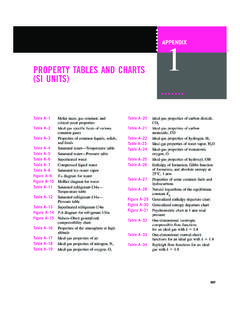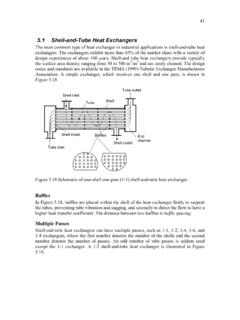Transcription of Attachment styles, shame, guilt, and collaborative problem ...
1 Personal , 4 (1 997), 1x7-199. Printed in the United Statcs ol America Copyright 0 1997 Cambridge University Press. 1350-4126197 $ + .I0 Attachment styles, shame , guilt , and collaborative problem - solving orientations FREDERICK G. LOPEZ, MARK R. GOVER, JENNIE LESKELA, ERIC M. SAUER, LISA SCHIRMER, AND JAMES WYSSMANN Michigan State University Abstract The present sLudy explored relations among adult attachmeni stylcs, shame - and guilt -proneness, and several measures of relationship problcm- solving attitudes and behaviors. Participants were I42 undergraduatcs (32 males, I10 fcmales) who completed boih categorical and continuous mcasurcs of adult Attachment , as wcll as sclf-report mcasurcs of the other constructs under investigation.
2 Most participants (93%) were currcntly involved in either exclusivc or casual dating relationships at the time of the study. Controlling for respondcnts dating staius, results indicated that participants Attachment styles were significantly related to both shame -proncness and collaborative problem - solving , Preoccupied and fearful students were more shame -prone than were their secure and dismissive peers, and securc participants reported significantly higher collaboration scores relative to their fearful counterparts. As expected, shamc and guilt scores were differcntially related to collaborative problem - solving , and participants attachmcnt security significantly moderated observcd shame - guilt correlations.
3 Finally, respondents guilt and shamc scores partly mediated observed relations between adult Attachment stylcs and collaborative problem - solving oricntations. In recent years, Attachment theory (Bowlby, 196911 982) has been fruitfully extended to the study of adult love relationships, At- tachment theory proposes that, as a conse- quence of their early developmental expe- riences with primary caregivers, individuals form cognitive schemas (internal working models) pertaining both to their own com- petence and lovability (self-model) and to the accessibility and responsiveness of sig- nificant others in their social worlds (other model).
4 Frederick G. Lopcz, Department of Counseling, Edu- cational Psychology and Special Education, is thc sen- ior author. The junior authors, all graduatc students in the siunc department, contributed equally to the preparation of this manuscript. Their names arc listed in alphabetical order. Wc thank Ellen Narusis, Mickey Mclendcz, and Donna McDonald for their assistance with data collec- tion, and we thank Ellen Bcrger and Kim Thomas for their comments on earlier drafts of this manuscript. Corrcspondence concerning this article should be addrcssed to Frederick G. Lopez, 441 Erickson Hall, Michigan State University, East Lansing, MI 48824.
5 Bartholomew and Horowitz (1991) have proposed that, as a function of these schemas, individuals will typically exhibit one of four distinct Attachment styles in their adult relationships. Secure adults are presumed to have internalized positive models of both self and other, allowing them to be comfortable with both closeness and separateness in their intimate relation- ships. Preoccupied adults have incorpo- rated a negative model of self while concur- rently embracing a positive model of others. These individuals, while doubtful of their own intrinsic lovability, seek to maintain proximity with desired others and become emotionally distressed when such closeness is either threatened or unachieved.
6 Dis- missive adults, on the other hand, are pre- sumed to have developed a positive model of self and a negative model of others, lead- ing them to prefer greater independence and lower levels of intimacy in their per- sonal relationships. Finally, fearful adults are assumed to have internalized negative 187 I ss FG. Lopez el ul. models of both sclf and othcr. As a result, their relationship behavior is marked both hy leelings of low self-worth and by high levels 01 social avoidance. llie emergent litcrature extending at- tachment theory to the study of adult love relationships, largely stimulated by Hazan and Shaver s (1 987) pioneering study, has produced several consistent findings (Bar- tholomcw & Horowitz, 199 1 ; Collins & Kcad, 1990; Fecney 8r Noller, 1990, 1991; Kobak 8r Sccery, 1988; Levy & Davis, 1988; Pistole, 1989, 1995; Shaver & Hazan, 1903; Simpson, 1990; Simpson, Rholes, 8r Nelli- gin, 1992).
7 For example, relative to their insecurely attached peers, secure individu- als report higher levels of trust and rcla- tionship satisfaction, more frequent posi- tive emotions and less lrequent ncgative emotions, bcttcr affect-regulation capabili- ties, and more constructive approaches to conflict resolution. Whcn more specific fea- turcs of relationship lunctioning have been explorcd, investigators have found that se- cure adults make more appropriate usc of self-disclosure, reflective and empathic lis- tening, perspective-taking, and cooperative problem - solving strategics (Kirkpatrick 8r Davis. 19911; Kobak 8r Hazan, 1991; Mikulincer & Nachson, 1991; Pistole, 1989; Kotlibard, Koberts, Leonard, & Eiden, 1993; Senchak & Lconard, 1992).
8 By con- trast, individuals with insecure Attachment styles exhibit more inanipulative and coer- cive strategies and rcport higher levels of conllict and distrust in their intimate rela- tionships (Levy & Davis, 1988; Pistole, Taken together, thesc findings under- score important rclationships among adult Attachment stylcs, general ( , positive vs. ncgative) affcctive states, and ovcrall rela- tionship problem - solving . However, com- parativcly less attention has been focused on (a) thc rclation of adult Attachment stylcs to specific rclationally based af- fects and problem - solving orientations, and (h) cxplorations of particular pathways that may interconnect these constructs.)
9 Some other logical considerations also support thesc extensions of research. 1995). First, it is axiomatic that securely at- tached adults are not immune to negative affcctive states in their close relationships. It is also likely that not all ncgative affects are detrimental to the course of relation- ship adjustment. Indecd, common sense would suggest that some forms of affective discomfort may be necessary to trigger ap- propriate orientations to relationship prob- lem- solving . These possibilities suggest a need for more differentiated inquiry of the interrelationships among adult Attachment styles, distinct relationally based aflects, and specific problem - solving orientations.
10 Attachment Styles, shame , guilt , and problem -Salving Orientations Two affects that may havc particular sig- nificancc for Attachment -related dynamics and problem - solving processes in close re- lationships are shame and guilt . shame re- fers to the phenomenological experience of suddcn and unexpected exposure, one that renders the self diminished or defec- tive in some essential way (Lewis, 1971; Lynd, 1958; Miller, 1985; Piers & Singer, 1953). Pointing to the quintessentially social nature of shame , Lewis proposed that shame involves the lailure of the cen- tral Attachment bond whereas Kaufman (1989, 1992) relates shame to thc experi- ence of being emotionally and psychologi- cally cut off from one s significant attach- ments.



















